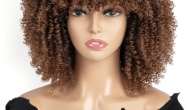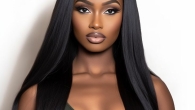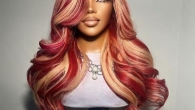
Insight into Jewish Women’s Wig-Wearing Practices
The Significance of Hair Covering in Judaism
Why jewish women wear wigs? The tradition of hair covering is deeply rooted in Judaism. It carries rich cultural and religious meanings that go beyond mere appearance. For Jewish women, covering their hair is a powerful expression of faith, modesty, and identity. This practice encapsulates principles that have been passed down through generations, shaped by biblical texts and rabbinic interpretations.

Biblical and Talmudic Origins of the Practice
The practice of hair covering comes from ancient times. Its origins are found in the Hebrew Bible and expanded in the Talmud. The Bible tells of the Sotah ritual. In this ceremony, a priest uncovers a woman’s hair as part of her public shaming. From here, Jewish law infers hair covering as a norm for married women. The Talmud adds nuance. It suggests that community standards shape how and when a woman covers her hair.
The Role of Modesty and Privacy in Hair Covering
Modesty (tzniut) is central in Judaism. It’s not about hiding beauty but about reserving certain aspects for private life. Hair covering acts as a boundary. It symbolizes that a woman’s hair is personal and not for public display. The wig or sheitel creates a layer of privacy that aligns with Jewish values of modesty and dignity.

Hair Covering as a Symbol of Marital Status
Why jewish women wear wigs? For Jewish women, covering their hair is also a sign of their marital status. It signifies the transition into a new phase of life where her hair is seen only by her spouse. This change reflects a deeply held belief in the sanctity of marriage and the exclusivity of the marital relationship.
In summary, hair covering in Judaism goes far beyond mere tradition. It involves a mix of legal requirements, spiritual expressions, and communal expectations. Whether through wigs, scarves, or hats, the way Jewish women embrace this practice continues to evolve and resonate with contemporary life.
Variations in Hair Covering Practices
The practice of hair covering varies across the Jewish spectrum. Orthodox, Conservative, and Reform communities each have distinct views and customs. These differences reflect diverse interpretations of religious texts, cultural integration, and individual choices.
Differences Between Orthodox, Conservative, and Reform Perspectives
Orthodox Jewish women often cover their hair, especially after marriage, to uphold modesty as dictated by Halacha, Jewish law. Conservative practices may be more varied, with some women opting for hair covering during prayer or special occasions. Reform Judaism typically does not require hair covering, emphasizing personal choice and equality.
Sheitels, Scarves, and Hats: Diverse Forms of Hair Covering
Options for hair covering are diverse. Sheitels, or wigs, are popular among many Orthodox women. Scarves and hats are also common choices, offering different levels of coverage and comfort. The selection often depends on personal preference and community standards.
The Impact of Community Norms on Hair Covering
Community norms heavily influence hair covering practices. In tightly-knit communities, these norms may dictate specific types of coverings. In more open communities, women may feel free to choose styles that fit their identity and lifestyle. These norms evolve as communities change and interact with wider society.
The Controversy and Philosophy Behind Wearing Wigs
Why jewish women wear wigs? The choice to wear a wig, known as a sheitel, is steeped in Jewish tradition but not without debate. Critics question the modesty of wigs, often indistinguishable from natural hair or even more attractive. Pro-wig arguments suggest that the essence of modesty is the barrier it creates between a woman’s hair and the public. Thus, a wig serves its purpose.

Addressing Misconceptions About Attractiveness and Modesty
Many assume modesty in Judaism means looking unappealing. This is not true. The goal is to create a private space, not to diminish one’s beauty. Wigs can achieve this while allowing women to feel confident and dignified.
The Debate over Natural Hair Versus Wigs
Some argue that wigs defeat the modesty goal if they look better than real hair. Others posit that the wig’s role is less about beauty and more about creating a division between a woman’s private and public self.
The Personal and Societal Implications of Wig-Wearing
Wearing a wig carries personal meaning. It reflects a woman’s choice in expressing her religion and her societal identity. This choice also impacts how Jewish women are perceived in wider society and how they navigate their public and private roles.
Halachic Perspectives on Hair Covering
Why jewish women wear wigs? Jewish law, known as Halacha, guides the practice of hair covering. Over time, rabbinic authorities have explored and debated this topic, leading to a variety of interpretations and rulings.
The Evolution of Rabbinic Rulings Over Time
Through history, rabbinic rulings on hair covering have evolved. Earlier sources drew from the Bible and Talmud, establishing hair covering as an expectation for married women. As communities changed, so did the interpretations. Some modern rabbis still see it as obligatory, while others view it as a cultural practice.
The Notion of Hair as ‘Ervah’ and Its Interpretations
The term ‘ervah’ refers to aspects of the body that should remain private. Hair has been considered ‘ervah’ by some rabbis, suggesting it should be covered. This view is not unanimous, with interpretations varying widely across different Jewish communities.
Modern Responsa and Changing Attitudes Toward Wigs
Recent rabbinic responsa reflect changing attitudes toward wigs. Some contemporary authorities argue that wigs fulfill the requirement of hair covering if they provide a clear distinction between public and private spheres. They also address practical concerns, like comfort and integration into daily life. Yet, not all agree, and debates continue within the Jewish world.
Cultural and Practical Considerations
Integration of Wigs into Daily Life and Ritual
In Jewish life, wearing a wig merges faith with practicality. Women choose wigs that fit their daily routines. Wigs allow for ease while running errands, working, or socializing. They become part of religious and cultural rituals. This adaptability makes them an integral aspect of many Jewish women’s lives.
The Influence of Western Culture on Jewish Practices
Western culture affects Jewish wig-wearing habits. Style choices often mirror current trends. This blend shows how traditions can adapt to modern times. Yet, the core reason for wearing the wig – modesty – remains unchanged. This mix of tradition and trend reflects a dynamic community that values both heritage and contemporary life.
The Role of Wigs in Jewish Identity and Expression
Wigs do more than cover hair; they express identity. For Jewish women, a wig can symbolize belonging to a community. However, style preferences can also showcase personal taste. This balancing act helps women navigate their dual desires for individuality and communal connection. Wigs serve as a unique medium for self-expression within the framework of Jewish modesty.

Personal Stories and Community Trends
Personal accounts from Jewish women highlight the diversity and depth of hair covering practices. Wig-wearing reflects personal choice, religious commitment, and communal identity, making each woman’s story unique.
Women’s Experiences with Hair Covering and Wig-Wearing
Many Jewish women share a common thread in their stories about hair covering. They often express a sense of pride and connection to their heritage. Some women describe feeling empowered by the choice to cover their hair. Others find comfort in the tradition, seeing it as a sacred link between themselves and past generations. Yet, the experiences are not uniform. Challenges such as comfort, cost, and societal perception can affect their daily lives.
For some, a wig is more than a head covering. It’s a work of art that reflects personality and style. Wearing a wig can offer a blend of modesty and fashion, balancing religious obligations with an appreciation for contemporary looks. The stories of wig-wearing intersect with identity, creating a tapestry of Jewish life rich in tradition and modernity.
Generational Shifts and Evolving Practices
Hair covering practices are not static; they change with time. Younger Jewish women might approach the tradition differently than their mothers or grandmothers did. In some communities, there’s a trend towards more personal expression within the bounds of modesty. These shifts can result from education, exposure to different cultures, or changes in community standards. As generations pass, the interpretation and application of this tradition continue to evolve.

The Future of Hair Covering in Jewish Life
What does the future hold for the tradition of hair covering in Jewish communities? Trends suggest a growing variety of options and attitudes toward hair covering. Some predict a rise in custom sheitels designed for individual tastes, while others foresee an increase in alternative coverings like scarves and hats. The constant is the commitment to the underlying principles of Jewish modesty and identity. Whatever form it takes, hair covering will likely remain an integral practice within Jewish culture, adapting to the times while honoring an age-old tradition.












Leave a Reply